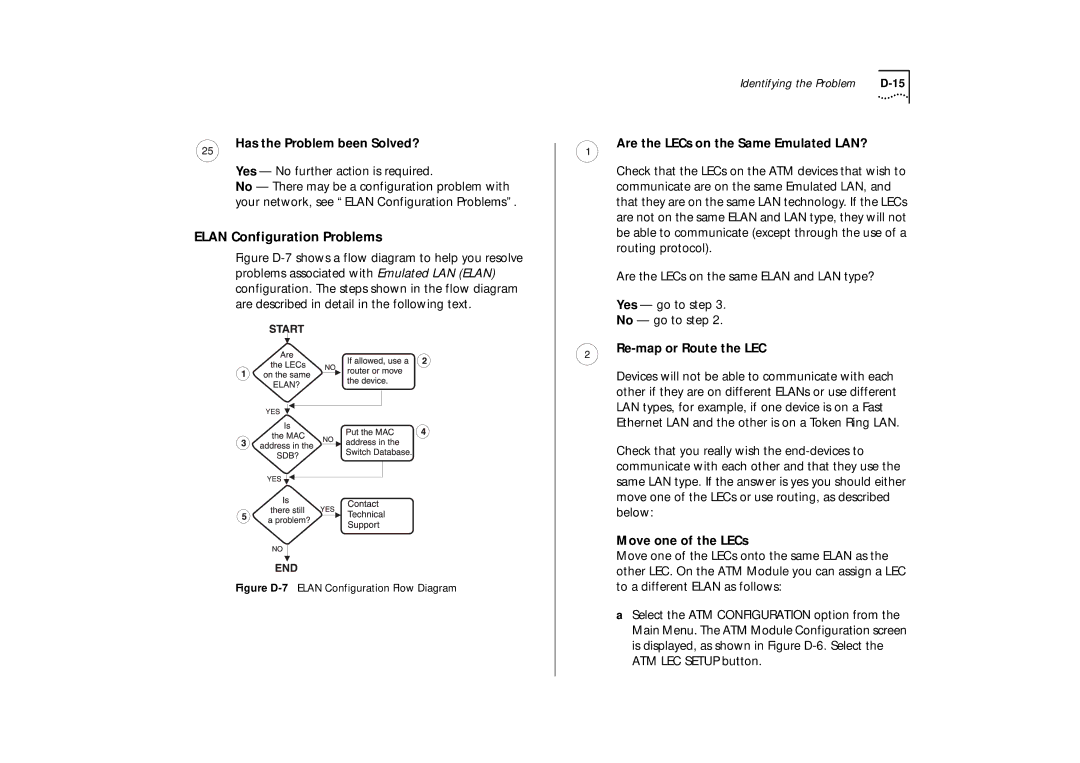
Has the Problem been Solved?
Yes — No further action is required.
No — There may be a configuration problem with your network, see “ELAN Configuration Problems”.
ELAN Configuration Problems
Figure D-7 shows a flow diagram to help you resolve problems associated with Emulated LAN (ELAN) configuration. The steps shown in the flow diagram are described in detail in the following text.
Figure D-7 ELAN Configuration Flow Diagram
Identifying the Problem |
Are the LECs on the Same Emulated LAN?
Check that the LECs on the ATM devices that wish to communicate are on the same Emulated LAN, and that they are on the same LAN technology. If the LECs are not on the same ELAN and LAN type, they will not be able to communicate (except through the use of a routing protocol).
Are the LECs on the same ELAN and LAN type?
Yes — go to step 3.
No — go to step 2.
Re-map or Route the LEC
Devices will not be able to communicate with each other if they are on different ELANs or use different LAN types, for example, if one device is on a Fast Ethernet LAN and the other is on a Token Ring LAN.
Check that you really wish the
Move one of the LECs
Move one of the LECs onto the same ELAN as the other LEC. On the ATM Module you can assign a LEC to a different ELAN as follows:
aSelect the ATM CONFIGURATION option from the Main Menu. The ATM Module Configuration screen is displayed, as shown in Figure
